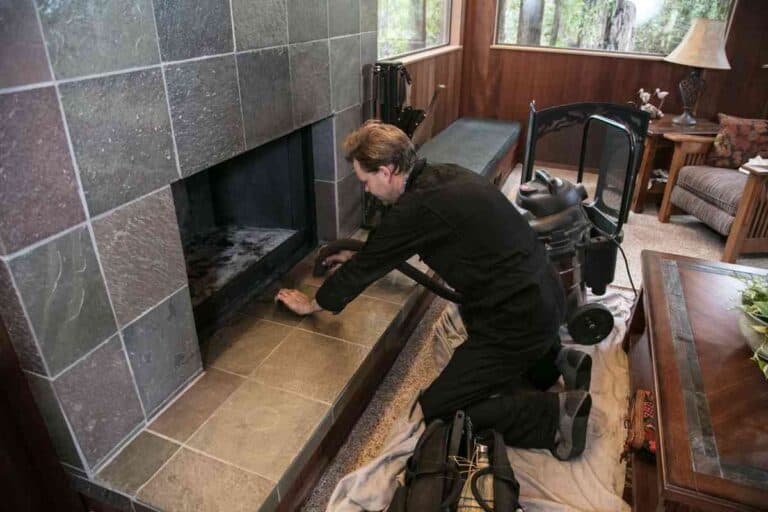Can You Use Galvanized Pipe on a Wood Stove?
You can add a lot of charm and warmth to your home with a flickering flame in a wood-burning stove. However, they can become a fire hazard without a proper exhaust pipe. This pipe must be the correct size and type for your stove to work correctly without posing additional dangers. These restrictions often lean people wonder if they can use galvanized pipes with their wood stoves.
When in doubt, do not use galvanized pipe with a wood stove due to the risk of toxic fumes.
While there are some circumstances where it might be okay to use galvanized pipe with a wood stove. The major issue is a potential health risk from toxic zinc fumes burning off into the air.
However, most stoves rarely get warm enough. You can also pre-treat the pipes to burn off the zinc in some cases.
That does not mean galvanized pipe is always safe to use. By reading further, you will learn the limitations of using galvanized pipes. You will also learn if there are better types of pipes you can use with your wood stove.
Are Galvanized Pipes Safe for Wood Stoves?
As an elegant way to warm up your home, wood-burning stoves burn efficiently with less pollution than other home heating methods. Lighting and maintaining the flame in their hearths also help bring families closer together. However, that open, flickering flame also poses a fire hazard if you do not install the stove properly.
Luckily, you can mitigate the fire risk by installing an appropriate exhaust pipe of the size and type. Your choice of piping is usually open to your personal preference, though local building codes often dictate the type. However, they usually only describe the wall layering. In most cases, you are free to choose material construction.
Wood Stove Galvanized Steel or Black Piping
Woodstove pipes come in two different material finishes galvanized steel and black. Galvanized steel pipes have a shiny, silvery surface and are usually the more expensive type. Black pipe sports a shiny, blue-black finish that dulls with use, but is normally the cheaper option.
Both types will remove smoke, water vapor, and ash from the hearth, but black pipe tends to burn out very quickly and requires constant polishing to prevent fires. These downsides lead many people to choose galvanized steel pipes for their wood stoves. This is because galvanized pipe lasts longer and requires very little maintenance.
Galvanized Pipe Safety Risks
However, galvanized pipe is not for the faint of heart. The zinc alloy coating can boil off if the pipes get too hot. This boiling zinc poison the air while destroying the pipe’s beautiful luster. The zinc fumes can make you sick with a high enough dose, though fewer amounts can still irritate your lungs and throat.
Luckily, wood stoves rarely reach the 1,652 degrees required to vaporize zinc. As such, there is no danger to your family if your wood stove has galvanized pipes that were installed properly.
The only real health risks are during installation. Welding pipe joints together does make the pipes hot enough to pose a risk. So, you should only have a professional install the pipes or do it outside.
What Kind of Pipe do You Use for a Wood Stove?
Home wood stoves require at least 24-gauge sheet metal single-walled stove pipes or thicker. Most local regulations also demand that the pipes have more than 18 inches of clearance from any combustible material. Beyond the basics, most wood stove experts recommend long-duration, pre-heated galvanized pipe. Black steel pipe rusts too quickly for most situations.
While you could use stove polish to keep black pipes from melting, stable galvanized pipe offers a better value that will last for years without maintenance. If installed and maintained properly, galvanized pipes can last up to 40 to 50 years or more before requiring replacing.
However, never use galvanized pipes in a sealed space. You want to ensure adequate airflow to the wood stove when using galvanized pipes to dilute the toxic fumes. Therefore, if you must use it, you should burn off the zinc in a safe, well-ventilated place before you install the pipes.
Can You Use Galvanized Steel for a Fireplace?
You can use galvanized steel for a fireplace. Galvanized fireplaces are safe as long as you use them properly. You just need to ensure the fireplace exists in a well-ventilated area. The airflow will keep any small amounts of zinc vapor insignificant.
However, the health risks are much more of an issue during installation. As such, you should only have a professional HVAC technician install any galvanized equipment into your fireplace. Your other option is to buy a pre-fabricated galvanized fireplace that had the zinc burned off at the factory.
How Hot Can Galvanized Duct Get?
Galvanized steel ducts are suitable for all high-temperature applications up to 392 degrees Fahrenheit (F) (200 Celsius). Any hotter than this and the outer layers of zinc will start peeling off into a toxic vapor. At this point, the metal glows red hot, making it easy to spot.
However, under normal circumstances, galvanized ducts stay well below 390 F. The metal tends to stay near the temperature of the surrounding environment or just slightly warmer. As such, you should not use galvanized pipes adjacent to any heat sources. Instead, keep the metal at least 18 inches from the source.
What is the Difference Between Stove Pipe and Duct Pipe?
Stovepipes are specialized, double-walled, high-pressure heat conduits designed for high-heat applications such as a stove or a fireplace. They most come straight and vertical, but you can find some with a bent or “elbow” shape.
Their job is to connect the appliance to an exterior chimney outlet. They also require a lot of ventilation as they cannot transport heat all that well. As such, stove pipes never penetrate walls or ceilings. Still, their round design lets heat and exhaust fumes flow quickly through them to the outside
HVAC duct pipes are low-pressure, single-walled heat conduits that can take any shape. They let hot air move at its own pace. As such, these pipes can often withstand high heat without any issues. However, they do not have secured joints, making them unsuitable for stoves or fireplaces.

Conclusion
Galvanized steel piping has numerous high-temperature applications including as exhaust pipes for a wood-burning stove. However, you should only use these pipes in a well-ventilated area. You must also properly install them to keep the risks from zinc exposure remains low.








